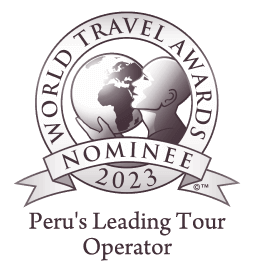Explore new destinations with leading expert insights, and valuable tips for conscious and

5 Unique Outdoor Adventures in Argentina That You Probably Haven’t Heard Of
Suppose your dream Argentina travel experience is filled with stunning scenery and thrilling outdoor adventures that take you off the beaten path. For...
5 Unique Outdoor Adventures in Argentina That You Probably Haven’t Heard Of
Suppose your dream Argentina travel experience is filled with stunning scenery and thrilling outdoor adventures that take you off the beaten path. For...
Everything To Know About The W Trek In Patagonia, Chile
Completing the W Trek in Patagonia is a bucket list worthy experience for any nature-loving traveler. Adventurers from across the globe travel to Chil...
How To Sustainably Visit the Inca Trail on Your Next Trip to Peru
Trekking the legendary Inca Trail to Machu Picchu is a dream for many adventurers, but with that dream comes the responsibility to preserve this iconi...
8 Culinary Events and Experiences in Peru To Attend in 2024
Renowned globally for its distinctive fusion of indigenous ingredients with Spanish, African, Asian, and even European influences, Peruvian cuisine st...
Exploring Bolivia’s National Parks: A Paradise for Outdoor Adventure Enthusiasts
Nestled in the heart of South America, Bolivia’s National Parks stand as a captivating tapestry of diverse landscapes and a profound cultural legacy...
9 Wildlife Conservation Programs For Your Travel To The Amazon Rainforest
The Amazon Rainforest, often referred to as the "Lungs of the Earth," is a vast and ecologically critical expanse of biodiversity. For tourists eager ...
A Guide To Visiting Carnival in Colombia in 2024
Colombia, a vibrant tapestry of culture and color, welcomes visitors to immerse themselves in the fervor of its annual Carnival celebration. Spanning ...
6 Outdoor Adventure Ideas For A Honeymoon in South America
Embarking on a honeymoon in South America promises an exhilarating tapestry of outdoor adventures, where lush rainforests, ancient ruins, and pristine...
Kuoda’s Guide to the Best Winter Sports Destinations in South America
As winter blankets the Southern Hemisphere, South America unveils a spectacular playground for winter sports enthusiasts. From the towering peaks of t...
The Most Sustainable Destinations in South America To Visit in 2024
Sustainable travel to South America is critical in ensuring the destination, its biodiversity and rich cultures can be preserved for years to come. Th...
Exploring Peruvian Wine: A Guide For Wine-Lovers Traveling to Peru
Peru is a land of many treasures, from its rich history and diverse landscapes to its culinary delights, including Peruvian wine which is steeped in c...
Kuoda’s Guide to Travel to Torres del Paine
Nestled in the heart of Chilean Patagonia ,travel to Torres del Paine is a journey that stands as a testament to the raw, untamed beauty of nature. T...

"Perfect travels with Kuoda Travel"
“Mery and Thomas at Kuoda helped us plan a 2+ week itinerary through Ecuador and the Galapagos that exceeded our expectations. They worked closely with us to arrange experiences to meet our interests. The service provided was exceptional- including checking up on us continually to see if there was anything we needed, the hotels they chose for us were fabulous, the Galapagos cruise ship of 16 passengers was perfect. We have travelled with Kuoda throughout South America several times, have recommended them to friends and family and would use ONLY them on our next trip to South America.”

"Once in a lifetime trip thanks to Kuoda!"
“Our trip to Peru was truly a once in a lifetime experience made possible by all of the incredible staff and guides at Kuoda! They truly went out of their way to make the entire trip seamless and so very special. We could not be more grateful to this company for showing us the beauty of Peru!”

"Trip of a Lifetime!"
“Kuoda planned an unforgettable trip for us. They covered all the details so we didn’t have to stress over them. Hotels, restaurants, bus drivers, tour guides, the ADVENTURES, flight boarding passes, transporting our luggage while we played, it was epic to say the least! Thank you Kuoda for the trip of a lifetime!”

"Vacation of a Lifetime"
“We LOVED Karina. My boys still speak about her and say that they miss her. Karina was so incredibly fantastic… I was impressed with her knowledge and expertise as she taught us about the history of the Incas, the monuments, city structure, everything really… She was kind with my girls – entertaining them and keeping them occupied while my husband and I took some time to explore. Her warmth and friendliness is endearing. We were very sad saying goodbye to Karina – my children cried big tears. She is an asset to Kuoda and I am so thankful that we spent as much time as we did with her.”

"Tour of Peru Wonders"
“Kuoda staff, trip designer, guides, and driver were the very best. They provided the absolute trip of a lifetime. Each day was planned, and it was excellent. (…) We would definitely recommend this to all our family and friends. (…) Mery and her whole staff accommodated our requests whenever we would ask. We could have never really expected such professionalism and friendly service.”

"Fantastic Peru Tour"
“Stating my favorite part is difficult because I enjoyed all parts of the trip agenda. Lake Titicaca was fantastic; Machu Picchu was just beyond words; seeing the Condors was an unbelievable experience; the guides were knowledgeable and met every need. I would highly recommend Kuoda Travel for anyone desiring an end-to-end catered tour that will meet your every travel need.”

"An Incredible Bucket List Trip"
“Our trip was amazing!! We had personal guides at each stage as we moved around the country. All of the guides were not only knowledgeable, but professional, compassionate, and kind, so we were able to customize our tour to meet our activity level (we are older so couldn’t keep up with long days of walking, etc.). During driving time, we had many conversations about the history, politics, and culture of Peru.”


 Call
Call 















